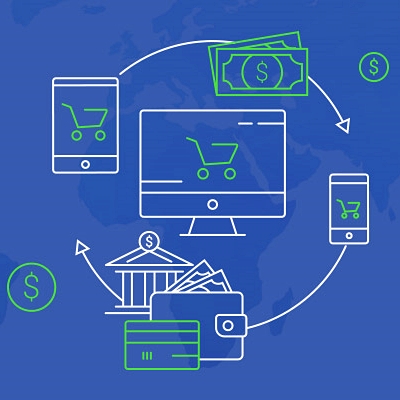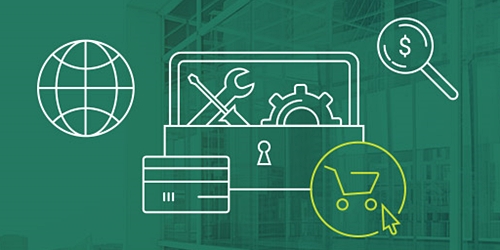SaaS has been around a while, but it’s never been bigger: the SaaS market is expected to surpass $112 billion by 2019, while back in 2010 it was worth a mere $10 billion. How will this already massive market continue growing so much, and what are some of the issues that companies will face as SaaS surpasses the $100 billion mark? There are for sure many driving forces behind this growth and eCommerce surely plays a role – not only as an enabler, but also as a potential hindrance if not done right.
Read on to find out what SaaS companies should be thinking about over the next three to five years regarding eCommerce and use this engine as a growth accelerator.
The Market Gets Personal
As the population grows and devices proliferate, more businesses will move to the cloud and people will count on more devices to conduct both personal and professional transactions. Growth in online, mobile and different types of marketplaces will continue to accelerate and customers will go “more” omnichannel than ever before, increasing the need for companies to develop a clear 360-degree customer view across all of the channels that their customers use. [Forget that “omnichannel” is already considered an old-fashioned term. Let’s face it, while it will be simply the way people make buying decisions and shop in about three to five years’ time, we’re not all there yet].
As omni-channel experiences expand, consumers and businesses alike will encounter more and more options and offers everywhere they go online. Dynamic pricing configuration, personalization optimization, super granular segmentation on several levels will become key requirements for setting offers apart from the competition and convincing customers to choose a particular brand.
Predictive analytics, big data and artificial intelligence will move from “nice to have” to absolutely required to optimize demand and merchandising, customer service and automation tasks. To stay competitive, businesses won’t be able to hazard a guess about how consumers behave or make slow manual adjustments to processes. Everything will need to be instantly informed by the latest data from every channel, and processes will need to be automated as often as possible if companies want to remain ahead of the competition.
Expect XaaS Markets to Expand
It seems like almost anything can be delivered as a service these days, from analytics as a service to disaster recovery as a service to even robotics as a service. Expect to see XaaS markets expand and start to offer more productized services. This will create new opportunities for companies to monetize these products through an eCommerce platform. Whether these are internet of things connected technologies associated with a physical product or different verticals transitioning to cloud packaging, XaaS represents a massive and growing eCommerce opportunity. As the internet of things catches fire and more industries make the shift to SaaS, consumers and businesses will be able to obtain any kind of technology service online with ease, and customer expectations for on-demand delivery and ongoing experimentation will grow.
Consumerization of B2B continues
With prosumers all around us and expectations of Amazon and Uber like experiences, the consumerization of B2B software will continue to ramp up, requiring companies to continue optimizing interactions across the entire client lifecycle. Software sales are no longer a matter of appealing to a single centralized buyer in a company and focusing on a few annual transactions in that relationship. The continuing consumerization of B2B sales has created multiple buyers and countless ongoing touchpoints that can lead to a sale, frictionless payments, self-service and assisted interactions across channels pre and post purchase, all requiring companies to be always on with precise data collection and consistent, while personalized, offer targeting.
Payments will become invisible
Finally, we expect payments to become more seamless than ever before, as vendors embrace smarter payments that eliminate friction and make online purchases “just work.” Convenience and transparency will dominate; rather than having consumers pull out a card for every transaction, there will be new, more intelligent and simpler ways to build payments into ecommerce relationships.
With XaaS proliferating, vendors will also cross borders with ease and international payments will need to be enablers, not challenges. Sophisticated mechanisms behind the scenes will continue to help vendors optimize payments and improve recurring revenue, rather than leave it fall through the cracks.
Getting the Right eCommerce Toolbox
As the market grows and the trends we’ve named emerge, companies will undoubtedly start to face some new challenges. These include real-time customization, personalization and automation to improve the customer experience. Each of these endeavors is complex individually, but making them all work together seamlessly requires another level of effort and expertise.
As a recap, companies will need to be able to simplify and scale their operations internationally, diversifying their product portfolio to include physical goods and digital goods that work together to enhance the customer experience. Finally, marketplaces and distribution channels will start to converge as sales can truly happen anywhere.
Given these trends, what will companies need to succeed in SaaS over the next few years? Everything starts with powerful tools for customizing the customer experience and reporting for understanding behavior and what works. A failure to personalize, automate or change offers in real-time will cost companies in a big way. Because these marketing tools rely on access to consistent customer and transactional data, companies need to ensure the tools they use are all part of a unified platform or centralized infrastructure that also includes embedded payments, ecommerce, subscription billing, marketing solutions and appropriate distribution channels. Basically, everything required to sell XaaS successfully online needs to come together to create a better customer experience.
In addition to putting these tools together, companies will need to be able to manage and optimize them on an ongoing basis with centralized APIs, self-service portals, omnichannel attribution and tracking scripts that enable intelligent decisions.
How do you see SaaS and ecommerce in the next few years? Tell us in the comments!







